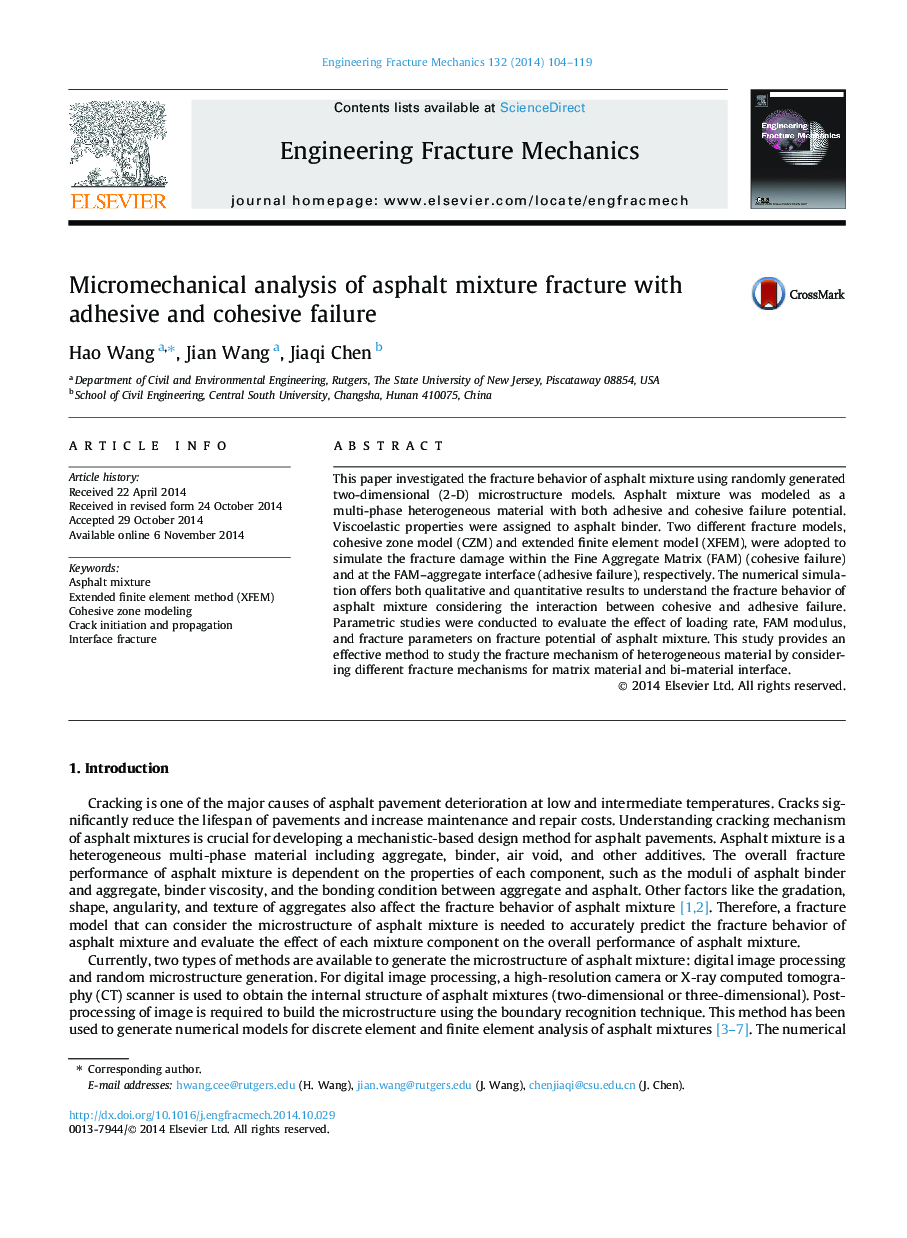| Article ID | Journal | Published Year | Pages | File Type |
|---|---|---|---|---|
| 770273 | Engineering Fracture Mechanics | 2014 | 16 Pages |
•Randomly generate aggregate microstructure of asphalt mixture.•Predict fracture behavior of asphalt mixture considering both adhesive and cohesive failure.•Parametric analysis with different loading rates, moduli, and interface bonding properties.
This paper investigated the fracture behavior of asphalt mixture using randomly generated two-dimensional (2-D) microstructure models. Asphalt mixture was modeled as a multi-phase heterogeneous material with both adhesive and cohesive failure potential. Viscoelastic properties were assigned to asphalt binder. Two different fracture models, cohesive zone model (CZM) and extended finite element model (XFEM), were adopted to simulate the fracture damage within the Fine Aggregate Matrix (FAM) (cohesive failure) and at the FAM–aggregate interface (adhesive failure), respectively. The numerical simulation offers both qualitative and quantitative results to understand the fracture behavior of asphalt mixture considering the interaction between cohesive and adhesive failure. Parametric studies were conducted to evaluate the effect of loading rate, FAM modulus, and fracture parameters on fracture potential of asphalt mixture. This study provides an effective method to study the fracture mechanism of heterogeneous material by considering different fracture mechanisms for matrix material and bi-material interface.
